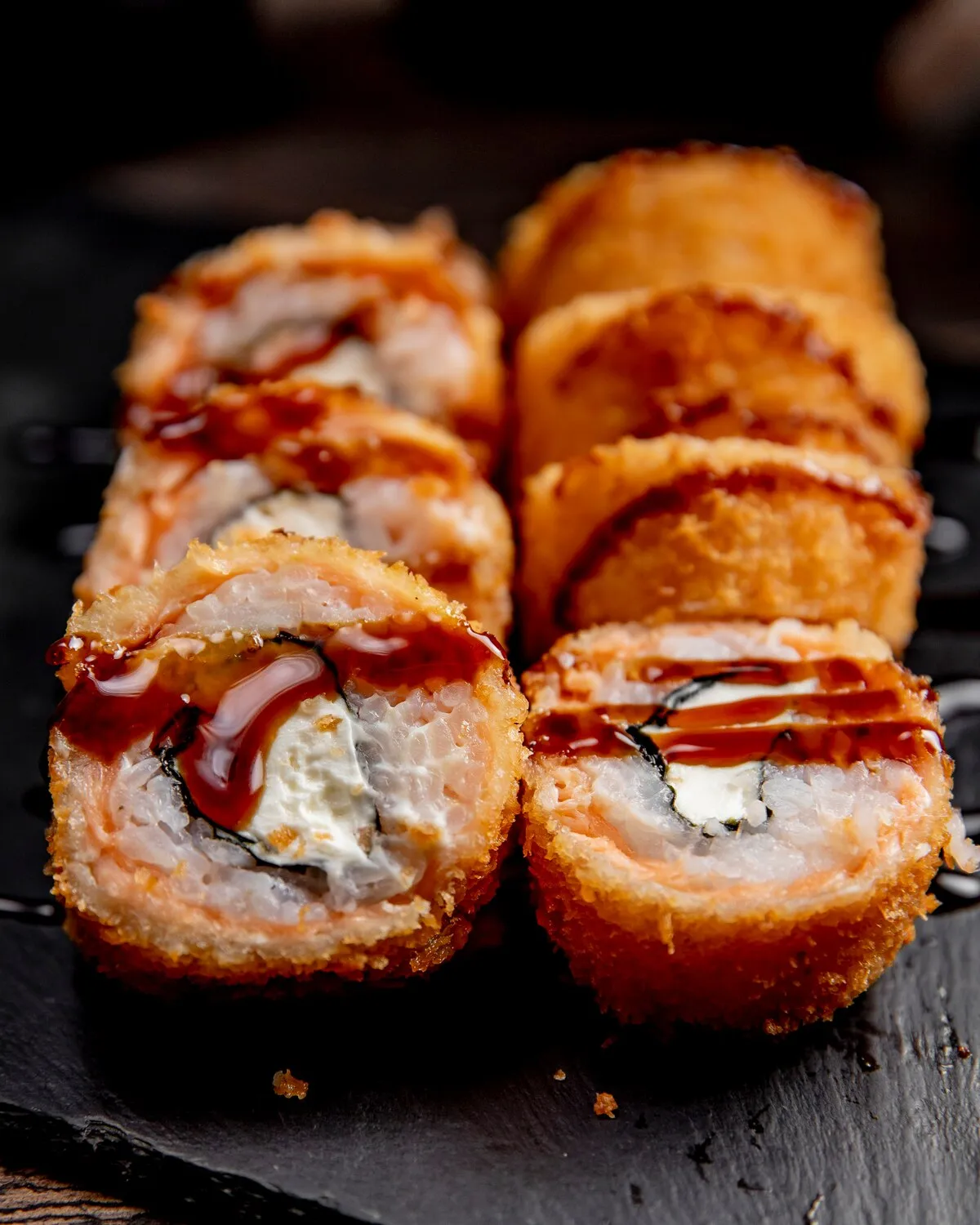
Hot Roll
Fried sushi roll, usually filled with salmon, cream cheese and other ingredients.
Nutrition Facts
* The % Daily Value (DV) tells you how much a nutrient in a serving of food contributes to a daily diet. 2,000 calories a day is used for general nutrition advice.
Miray Sushi
The Hot Roll, also known as a fried sushi roll, is a modern invention and doesn't have a long, established history like traditional sushi. It emerged as a fusion dish, adapting Japanese sushi techniques to Western preferences, likely in the latter half of the 20th century. Its history is tied to the broader evolution of sushi in the West, where chefs experimented with different flavors and cooking methods to appeal to local tastes.
The Hot Roll is largely a product of Westernized sushi culture. It represents a departure from the traditional emphasis on fresh, raw ingredients and reflects a desire for cooked, more accessible sushi options.
Fusion Cuisine
The Hot Roll exemplifies fusion cuisine, blending Japanese techniques with Western ingredients and preferences. It showcases the adaptability of sushi and its ability to evolve in different cultural contexts.
Accessibility and Popularity
Fried sushi rolls are often more appealing to those who are hesitant to try raw fish, making sushi more accessible to a wider audience. This contributes to the popularity of sushi in many Western countries.
Restaurant Innovation
The Hot Roll highlights the role of restaurants in innovating and adapting traditional dishes to suit local tastes and create unique menu offerings.
The Hot Roll presents a combination of creamy, savory, and crunchy textures and flavors. The warm, crispy exterior contrasts with the soft, cool filling inside.
The primary flavors come from the cooked salmon (savory and slightly oily), the cream cheese (rich, tangy, and smooth), and the fried nori (seaweed) and rice (nutty and mild). Additional ingredients, such as avocado, cucumber, or spicy mayonnaise, can add further dimensions to the flavor profile. The frying process imparts a satisfying crunch and a slightly smoky taste.
Temperature Control
Maintain the oil temperature at around 350-375°F (175-190°C) for optimal frying. Too low, and the roll will be greasy; too high, and it will burn quickly.
Dredging Techniques
Use a light coating of tempura batter or a mixture of flour and panko breadcrumbs to create a crispy and even coating. Ensure the roll is completely sealed to prevent the filling from leaking during frying.
Rolling Technique
Roll the sushi tightly to ensure that it holds its shape during frying. Use a bamboo rolling mat (makisu) for even pressure.
Serving Suggestions
Serve immediately after frying for the best texture and flavor. Pair with soy sauce, wasabi, pickled ginger, and a drizzle of spicy mayonnaise or eel sauce for added flavor.
Explore additional Sushi Roll dishes and restaurants
Explore Sushi RollDiscover top dining spots and culinary experiences in Parauapebas.
Explore ParauapebasLearn more about the food culture, restaurant scene, and culinary heritage of Brazil.
Explore Brazil